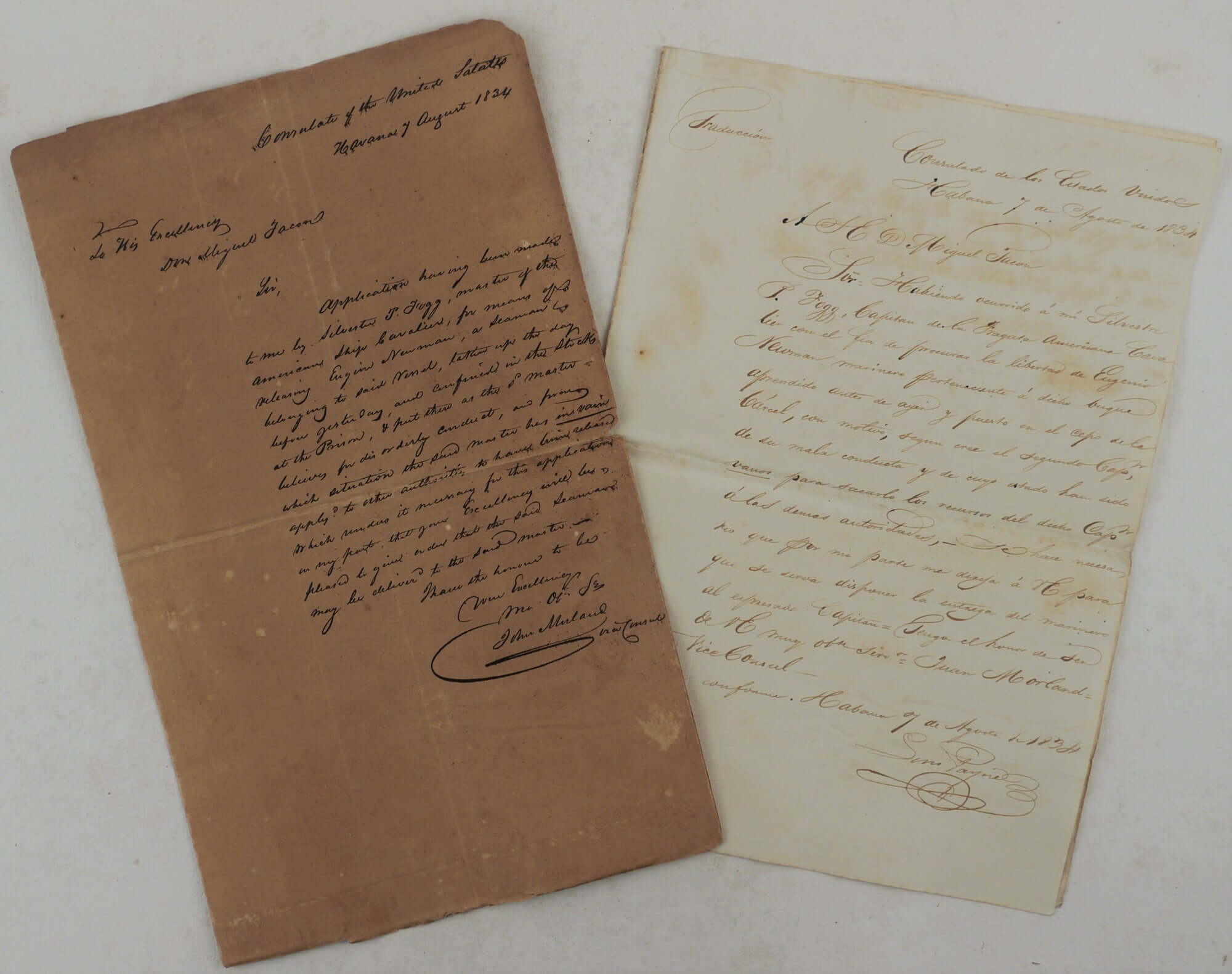



#M54
1834
Folio (ca. 33x20 cm). 1 pp., with an integral blank leaf. Black ink on paper, legible text in English. Mild fold marks, paper age toned, minor tears at folds, otherwise a very good document. The translation by Luis Paynes [?]: Habana, 7 de Agosti 1834. Folio (ca. 30x21 cm). 1 pp., with an integral blank leaf. Brown ink on laid paper, legible text in Spanish. Mild fold marks, paper slightly age toned, otherwise a very good document.
Interesting historical document relating to a case of imprisonment of an American seaman by Cuban authorities in the 1830s, and moreover of putting him in stocks: “Sir, Application having been made to me by Silvestre P. Fogg, master of the American ship Cavalier, for means of releasing Eugine Newman, a seaman belonging to said vessel, [taken?] up the day before yesterday, and confined in the Stocks at the Prison, & put there as the sd. Master believes in disorderly conduct, and from which situation the said master has in vain applied to other authorities to have been released, which renders it necessary for this application in my part, that your Excellency will be pleased to give order that the said Seaman may be delivered to the said master”. We don’t know whether the appeal by the American acting consul in Havana to the Captain General of Cuba was successful, and arrested “Eugine Newman” (who could be a black sailor) had been released. Nevertheless, the letter gives an intriguing look into Caribbean trade shipping in the early 19th century. Bark “Cavalier” of 294 tons was launched in Newmarket, Mass. In 1827. In 1833-1835, mastered by Sylvester P. Fogg and owned by Thomas P. Bancroft, she made a number of trade voyages to the West Indies. In 1835-39 she was used as a whaler out of Salem (Ship Registers from the District of Salem and Beverly/ The Essex Institute. Historical Collections. Vol. XL. Salem, Mass., 1904, p. 53). Several of “Cavalier’s” logbooks kept in the 1830-1840s are now deposited in the collections of Peabody Essex Museum, Salem, Mass.











